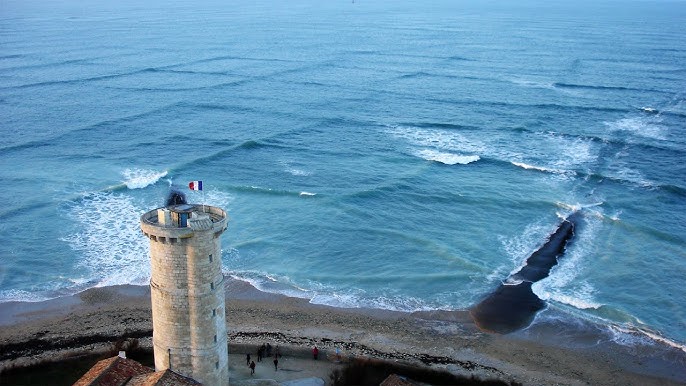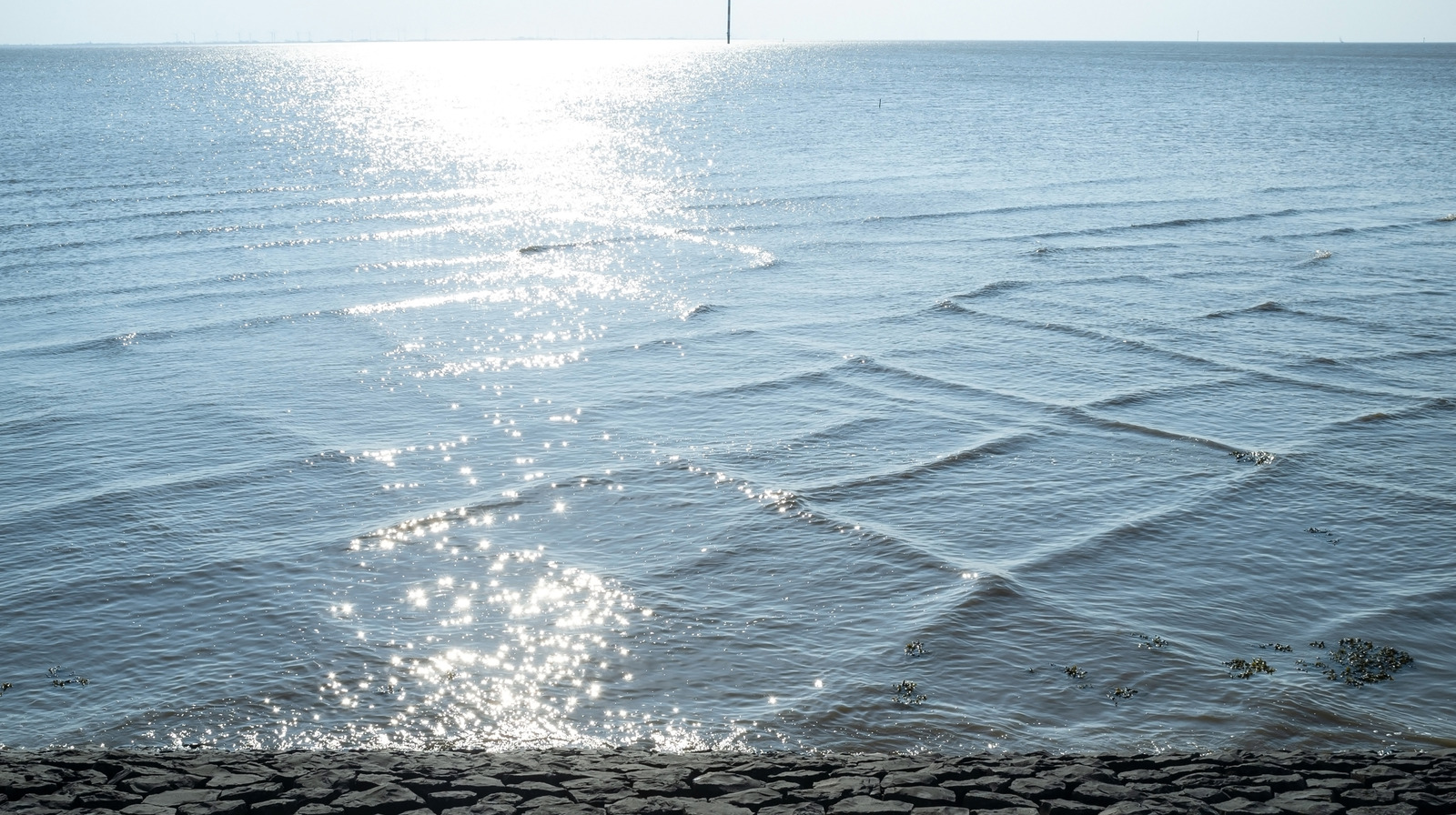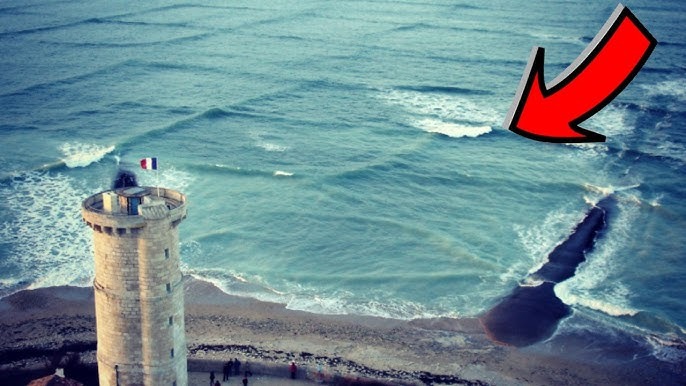A trip to the beach often feels like the perfect holiday escape. The sound of waves, the warmth of the sand, and the refreshing sea breeze can make for a day of relaxation and joy. But while the ocean is beautiful, it is also unpredictable. To enjoy it safely, beachgoers need to recognize and respect its hidden dangers.
Most people know to watch for rip currents, shifting tides, or strong surf conditions. Yet one of the most visually striking and lesser-known natural phenomena is the “square wave,” also called a cross sea. Though fascinating to look at, this rare sight can be extremely dangerous for swimmers and boaters alike.

What Are Square Waves?
Square waves, or cross seas, occur when two separate wave systems collide at near-right angles. Instead of rolling in the same direction, the water appears to form a checkerboard pattern on the surface of the ocean. The result is a series of square or diamond-shaped patterns that seem almost too perfect to be natural.
This phenomenon usually happens in deep waters where two distinct weather systems intersect. For example, waves generated by a distant storm may meet local wind-driven waves. When these forces cross each other at different angles, the unique square formation emerges.
Square waves are most often reported in parts of the Atlantic Ocean, near the western coasts of Europe, particularly around France’s Isle of Ré. However, they can occur in other regions of the world as well.

Why Are Square Waves Dangerous?
Despite their beauty, square waves are a warning sign of highly unstable conditions beneath the surface. Here’s why they can be hazardous:
-
Unpredictable Currents – The intersecting wave patterns create strong, choppy waters that can pull swimmers in multiple directions at once, making it nearly impossible to stay balanced or swim to safety.
-
Powerful Forces – Unlike regular waves that push toward shore, cross seas push and pull from conflicting angles. This multiplies the energy in the water, leading to rougher conditions.
-
Impact on Boats – Small and medium-sized vessels are particularly vulnerable. The crisscrossing waves can rock a boat from multiple sides, increasing the risk of capsizing.
-
False Sense of Security – From shore, the phenomenon may look harmless or even mesmerizing, luring the curious into the water without realizing the danger.
Experts emphasize that the safest choice when square waves appear is to avoid entering the water altogether.
The Science Behind Cross Seas
The ocean is a complex system driven by wind, tides, and weather events. Most of the time, wave systems align in roughly the same direction, creating predictable patterns. However, when weather systems collide, such as high- and low-pressure zones moving across the ocean, their generated waves can travel thousands of miles.
When these distant waves reach an area where local winds are producing their own set of waves, they can overlap at sharp angles. This overlap produces the geometric surface pattern of a cross sea.
Interestingly, meteorologists note that the presence of square waves is not merely a surface event. The crossing motion extends downward, stirring the water column and creating turbulent, unstable currents that make the area dangerous for both swimmers and marine traffic.

Documented Incidents
Throughout history, sailors have warned of the dangers of square waves. In maritime communities, legends often described them as “cross seas that sink ships.” While modern vessels are far stronger and safer than in centuries past, smaller boats and recreational craft are still at risk.
Several reports from Europe describe fishing boats encountering square waves off the coast of France and Portugal. Some vessels capsized due to the unpredictable rocking, and rescues had to be carried out by nearby ships or coast guard services.
Fortunately, these events are relatively rare, but they illustrate the importance of respecting the ocean’s power and not underestimating unusual surface patterns.

How to Stay Safe at the Beach
Most beachgoers will never encounter square waves, but awareness is key to ocean safety. Here are a few tips to help protect yourself and your family:
-
Observe Before Entering the Water – Spend a few minutes watching the sea. If you notice waves moving in different directions or forming a checkerboard pattern, do not enter the water.
-
Check Local Warnings – Many beaches post surf condition reports or issue warnings through lifeguards. Pay close attention to their advice.
-
Respect Nature – Even experienced swimmers and surfers should avoid entering waters with square waves. The unusual currents can overpower even the strongest swimmers.
-
Stay Near Lifeguards – Choose beaches with lifeguard stations whenever possible. Trained professionals can identify hazards and respond quickly if needed.
-
Educate Young Beachgoers – Children may be curious about unusual wave patterns. Teach them that while beautiful, these patterns signal danger.
Why Awareness Matters
In recent years, videos and photos of square waves have spread widely online, often praised for their mesmerizing appearance. While they are indeed a stunning natural event, spreading awareness of their risks is crucial.
By recognizing a cross sea as more than just a beautiful sight, beachgoers can make safer decisions. Respecting these natural warning signs can prevent accidents and ensure that a day at the ocean remains enjoyable.
Conclusion
The ocean has always been a place of wonder, mystery, and power. Square waves — also known as cross seas — highlight just how extraordinary and unpredictable it can be. They form when two wave systems meet at right angles, creating a striking checkerboard pattern on the water’s surface.
Yet beneath the beauty lies danger. The conflicting currents can challenge swimmers, overturn small boats, and create unstable conditions that even seasoned sailors avoid.
The next time you visit the beach, take a moment to look closely at the waves. If you ever notice the ocean forming a grid-like pattern, the safest decision is simple: admire it from the shore.
By staying informed and cautious, we can all continue to enjoy the magic of the sea while respecting its immense power.

